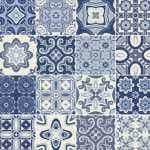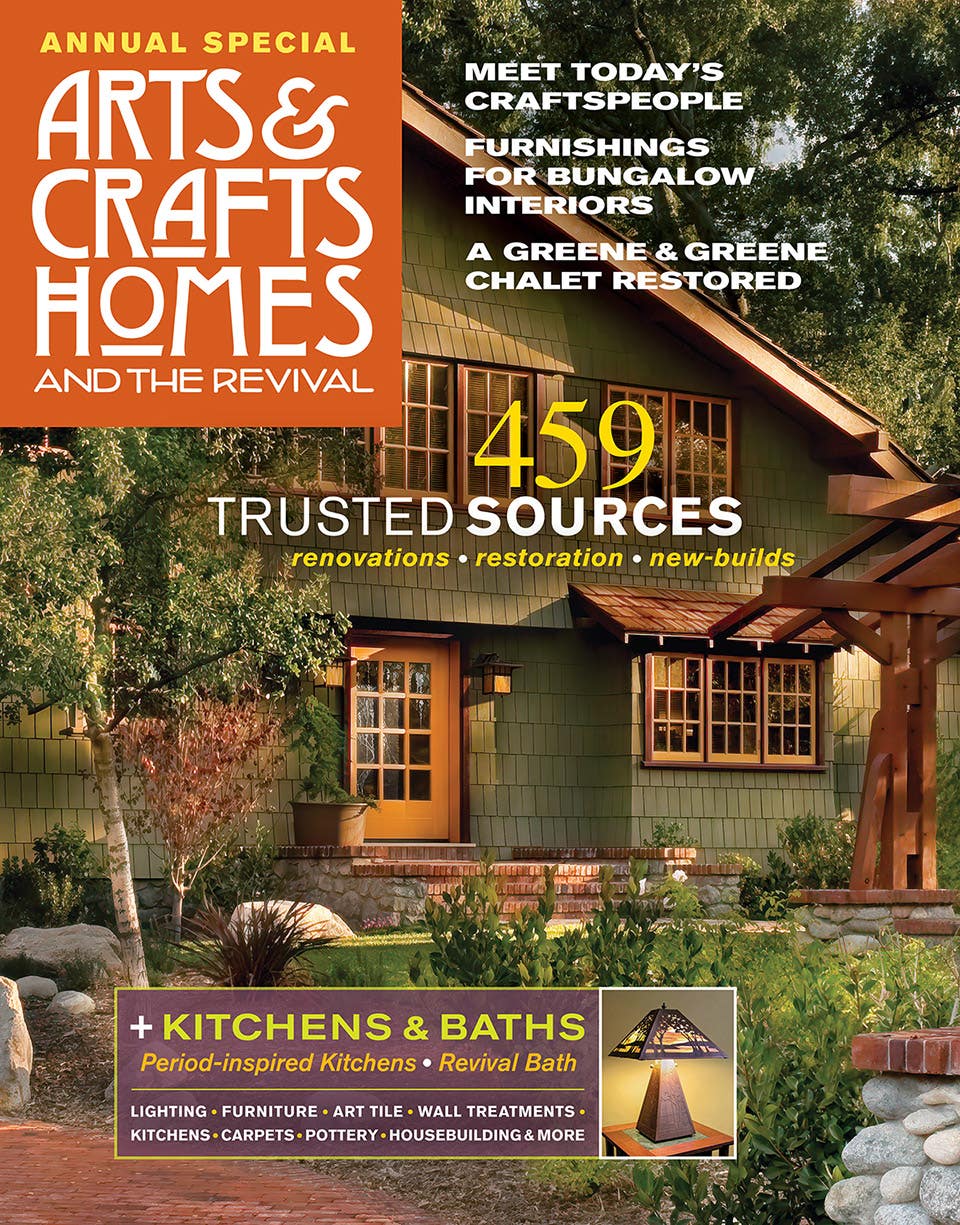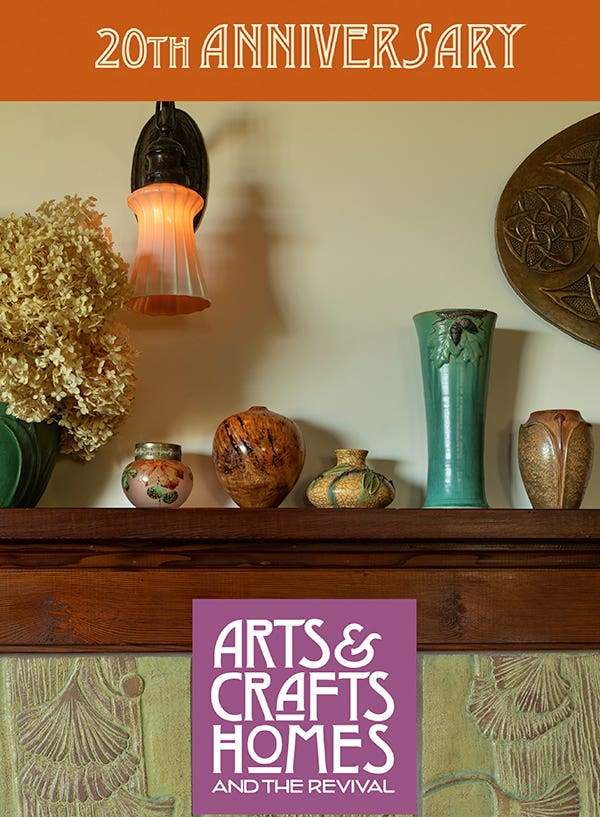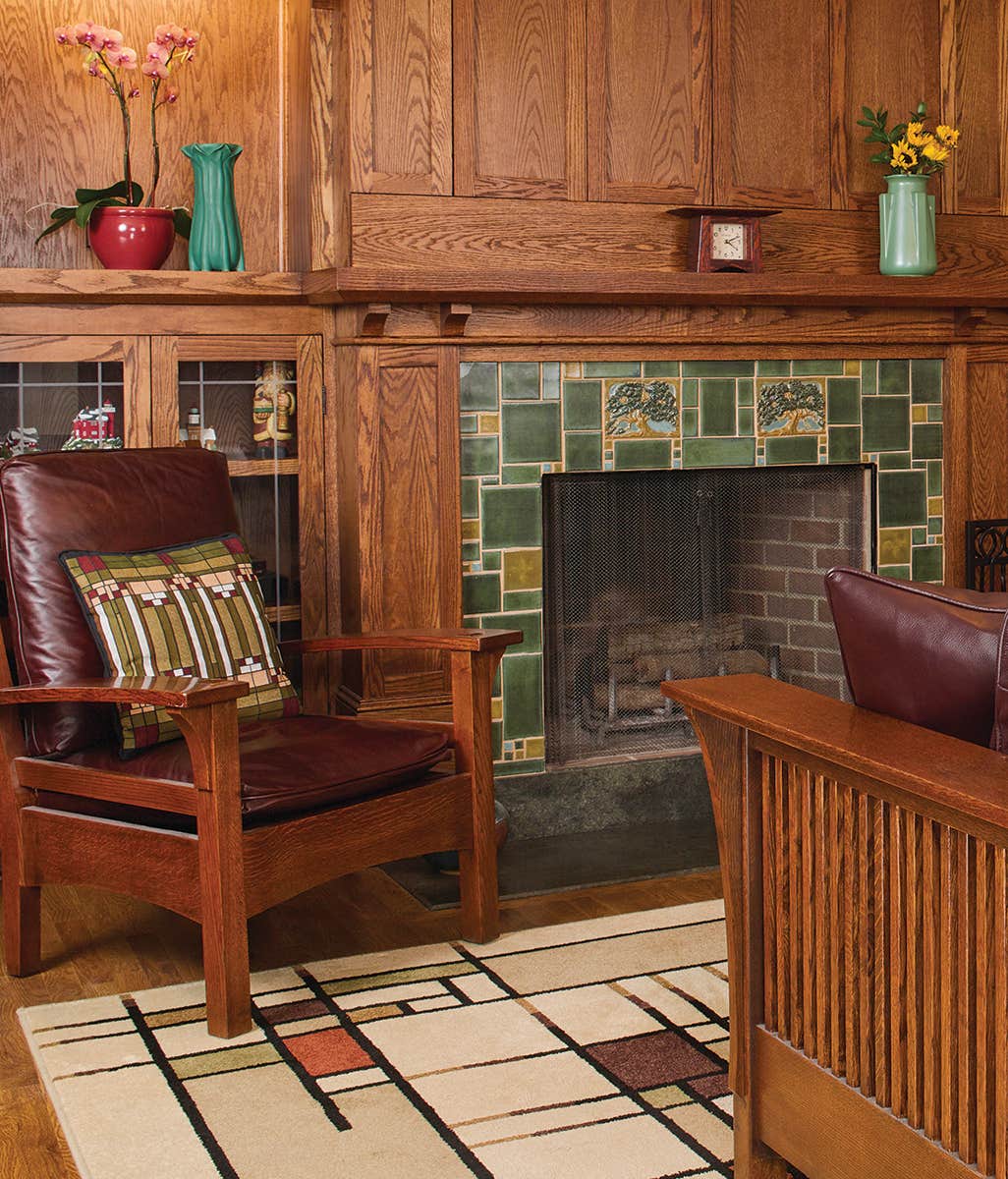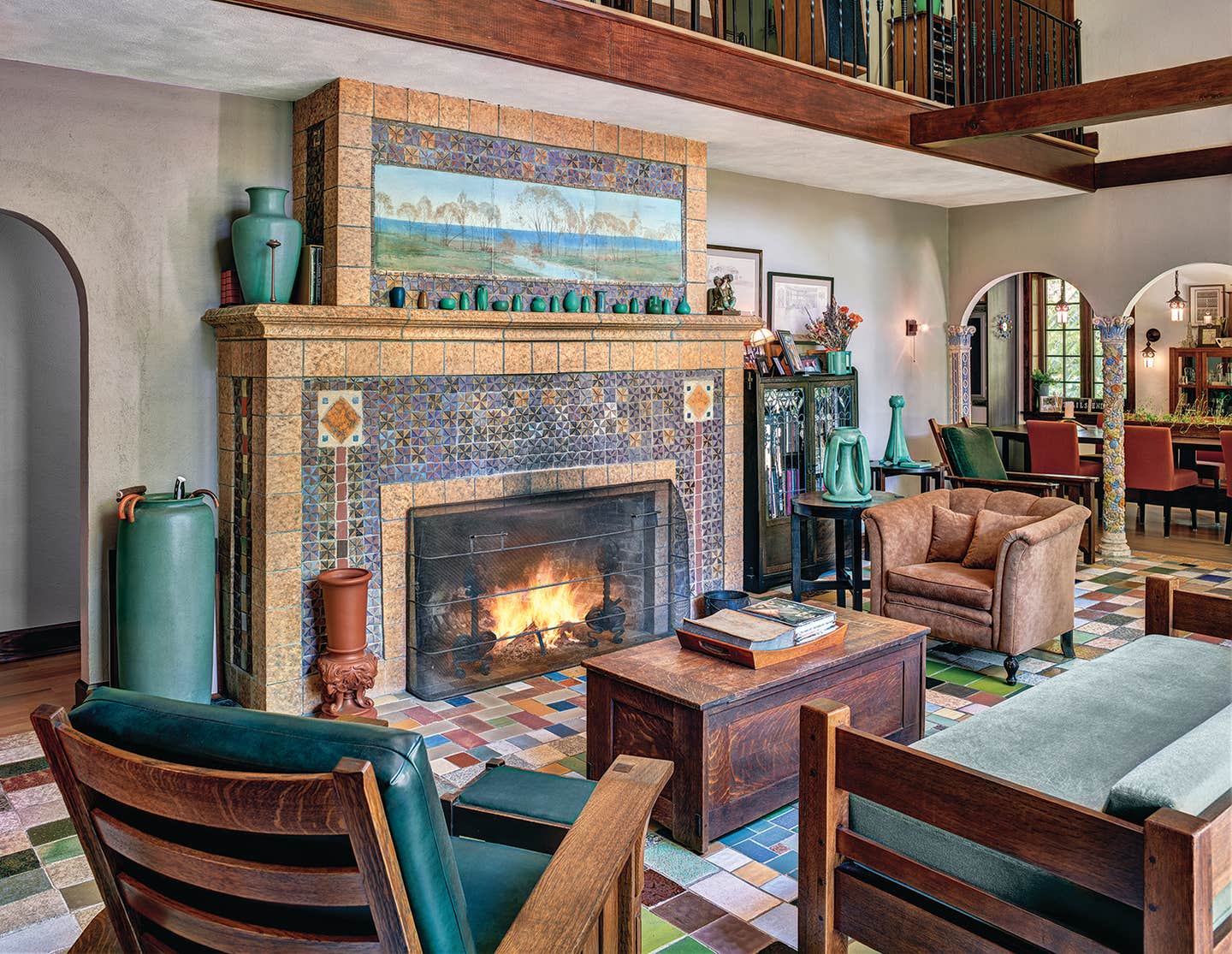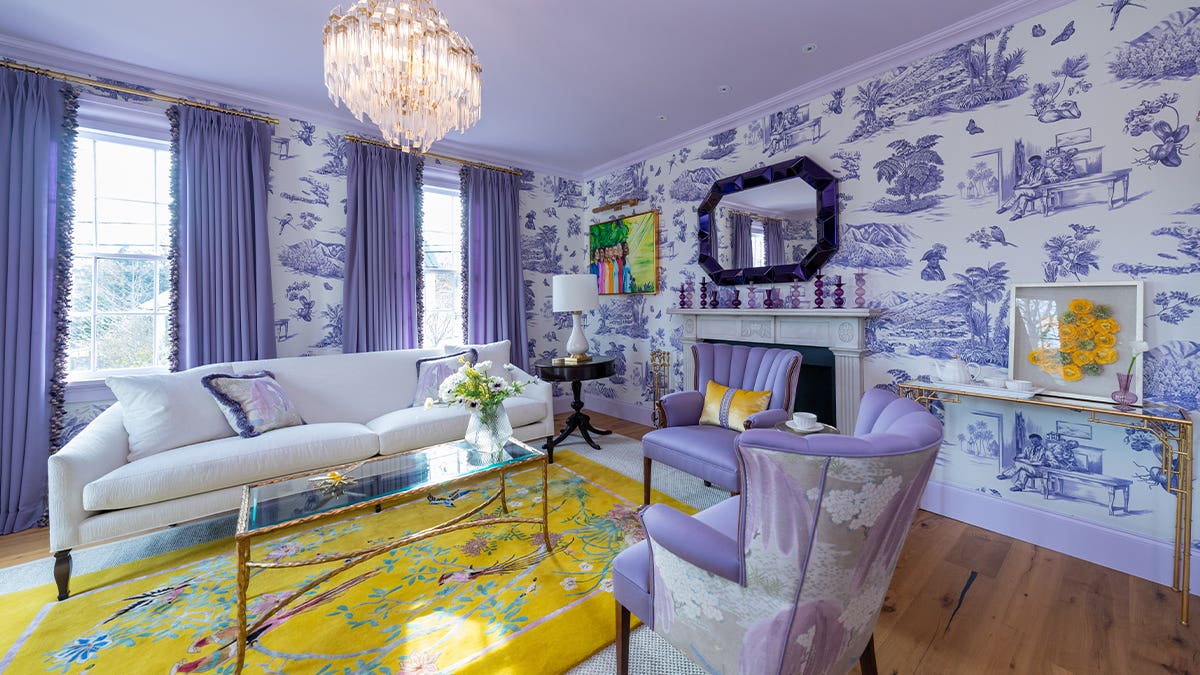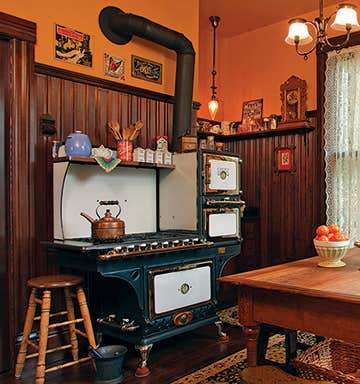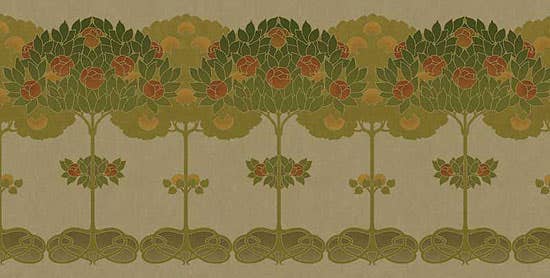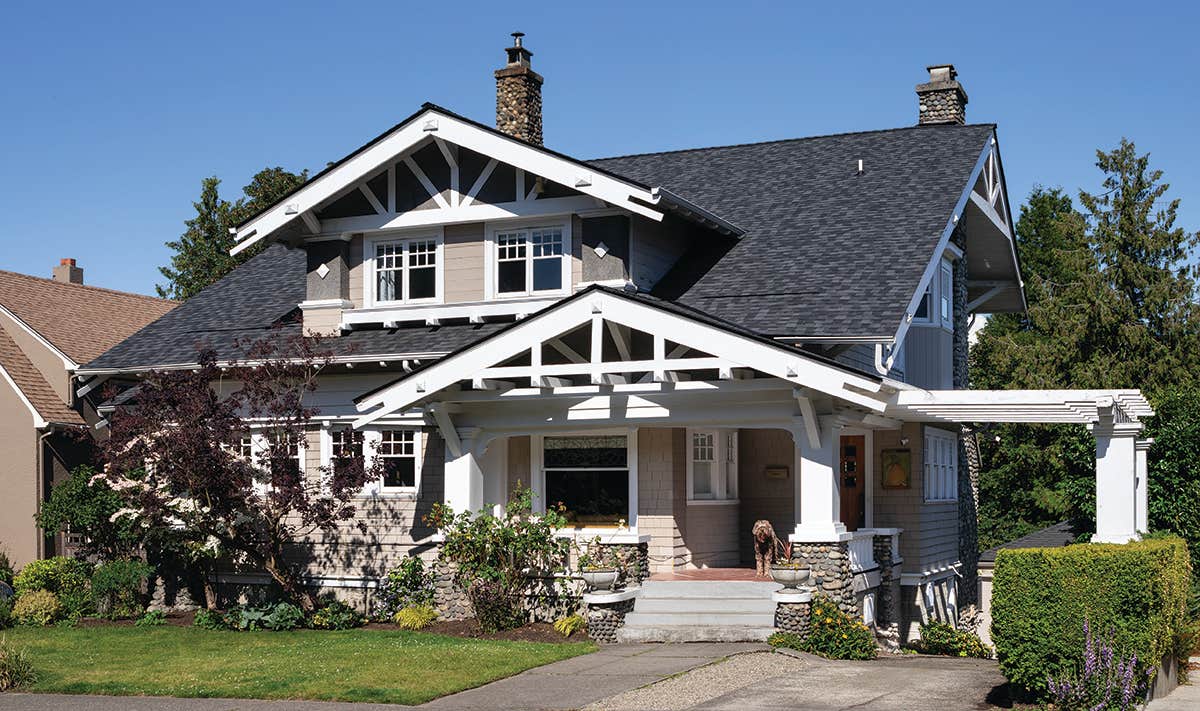Carpet History in the A&C Home
Learn about the history of carpet in Arts & Crafts homes.
Bungalows and other houses of the Arts & Crafts era usually have finished wood floors, sometimes accented with parquet borders in Greek key or other patterns.
Such hardwood floors were meant to be displayed; also, polished and waxed surfaces were considered hygienic (as compared to large rugs or tacked-down carpeting) during this period.
Area rugs were favored, with choices that included traditional oriental and Turkish designs imported from the Near and Far East, Turkey, India, and China, along with hand-woven Hammersmiths from William Morris’s company in England—which were retailed in the U.S. by such high-end department stores as Marshall Field’s in Chicago and Wannamaker’s in Philadelphia. Donegal carpets in “soft shades of terra cotta red, blue, green, and golden brown,” bright and bold, were woven in Ireland’s County Donegal beginning in the 1890s; soon their handsome Arts & Crafts designs by Archibald Knox, C.F.A. Voysey, and others found their way into stylish interiors in New York as well as Dublin and London.

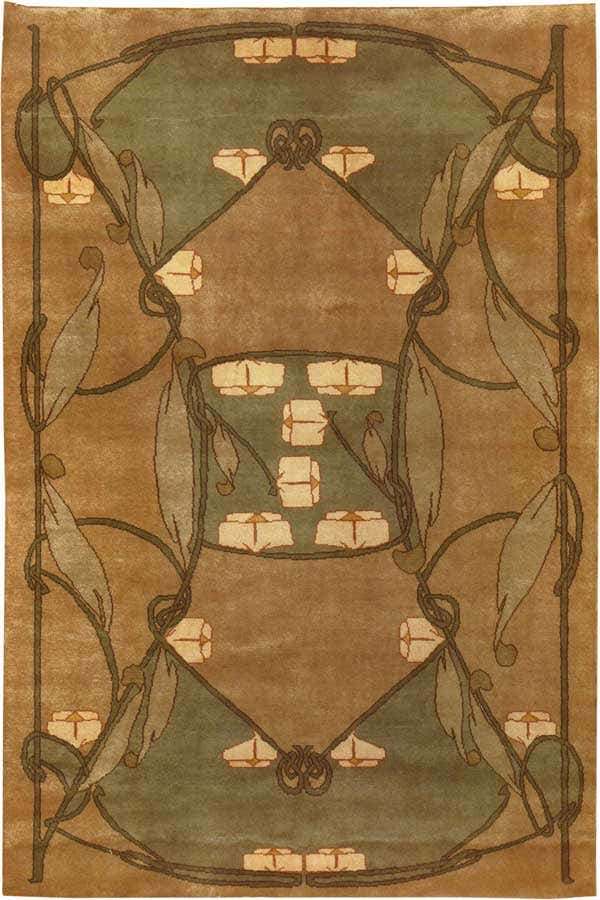
Imports
Many homeowners bought rugs from abroad—even Gustav Stickley sold imports from Turkey and China. But more traditional American, machine-made carpets were also popular, the familiar Wiltons, Axminsters, Brussels carpets, and ingrains. Often quite simple in design, a solid field with a patterned border, these were frequently used in several contiguous rooms to tie spaces together. Border patterns were often based on nature: pine trees and acorns, thistles, ginkgo leaves.
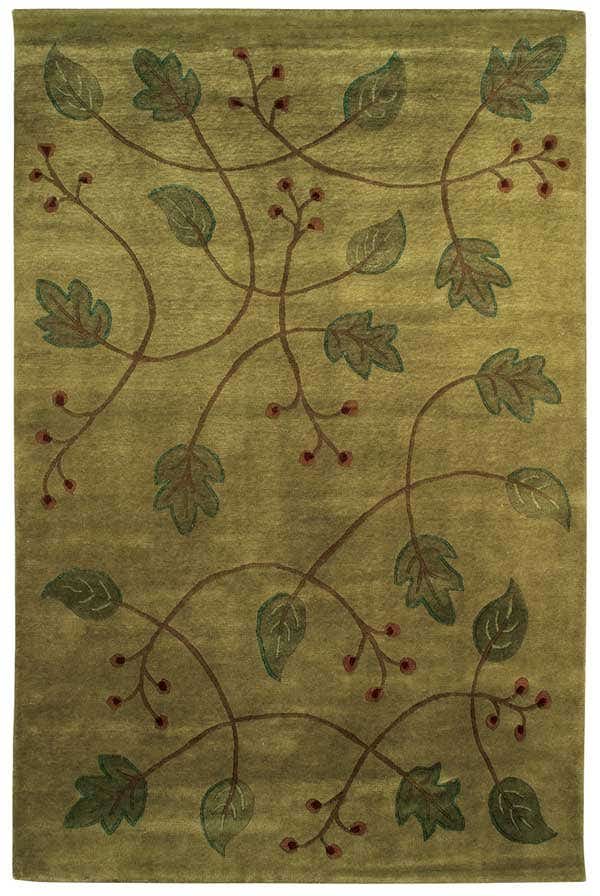
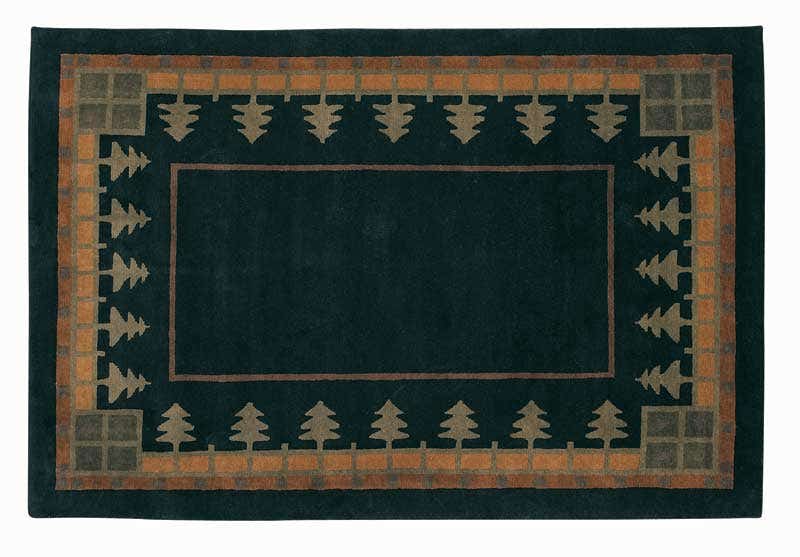
Not all carpets were elaborate, or expensive. Simple grass mats from China or Japan were advised in The Craftsman and other magazines as appropriate complements for the natural woodwork and “honesty” of the Arts & Crafts home. Rag rugs also gained favor, advocated by early social reformers such as Candace Wheeler as an acceptable home industry for women to increase their incomes and independence.
Native American crafts were the country’s only true handicrafts, according to Stickley. The strong, geometric designs in American Indian blankets and rugs enhanced the straight angular lines of his furniture, Stickley suggested. Thus many Craftsman homes of the period proudly hung a Navajo blanket on the wall above a leather-covered settle, or placed a geometrically patterned Native American runner beneath the Morris chair in the fireplace inglenook.
Arts & Crafts Homes and the Revival covers both the original movement and the ongoing revival, providing insight for restoration, kitchen renovation, updates, and new construction. Find sources for kitchen and bath, carpet, fine furniture and pottery, millwork, roofing, doors and windows, flooring, hardware and lighting. The Annual Resource Guide, with enhanced editorial chapters and beautiful photography, helps Arts & Crafts aficionados find the artisans and products to help them build, renovate, and decorate their bungalow, Craftsman, Prairie, Tudor Revival, or Arts & Crafts Revival home.
